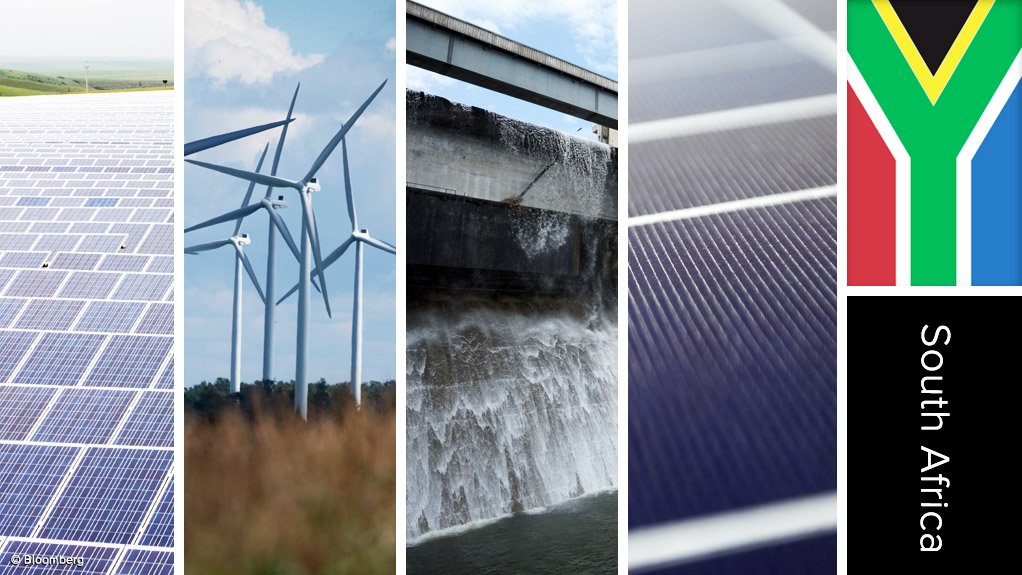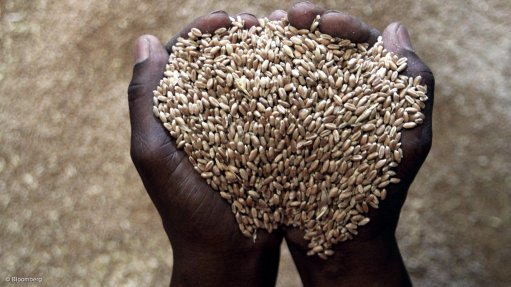Risk Mitigation Independent Power Producer Procurement Programme, South Africa – update
Name of the Project
Risk Mitigation Independent Power Producer Procurement Programme (RMIPPPP).
Location
South Africa.
Project Owner/s
Department of Mineral Resources and Energy (DMRE).
Project Description
The RMIPPPP, which is also known as the ‘emergency’ procurement round, is a response to the short-term electricity supply gap identified in the Integrated Resource Plan 2019.
The objective of the RMIPPPP is not only to alleviate the current electricity supply constraints but also reduce the use of diesel-based peaking electrical generators.
The programme aims to procure 2 000 MW from a range of energy sources and technologies.
The DMRE issued a request for proposal for the RMIPPPP in August 2020.
Mineral Resources and Energy Minister Gwede Mantashe released the names of the eight preferred bidders on March 18, 2021:
- the 150 MW ACWA Power Project DAO – a hybrid facility comprising solar photovoltaic (PV) and a battery energy storage system (BESS);
- a 450 MW Karpowership SA Coega facility – a gas-to-power plant based on imported liquefied natural gas (LNG);
- the 450 MW Karpowership SA Richards Bay facility – a gas-to-power plant based on imported LNG;
- a 320 MW Karpowership SA Saldanha facility – a gas-to-power plant based on imported LNG;
- the 198 MW Mulilo Total Coega facility – a hybrid plant employing solar PV and imported LNG;
- the 75 MW Mulilo Total Hydra Storage project – a hybrid facility comprising solar PV and a BESS;
- the 128 MW Oya Energy Hybrid Facility – a hybrid facility comprising solar PV, wind and a BESS; and
- the 75 MW Umoyilanga Energy – a hybrid facility comprising solar PV, wind and a BESS.
Eligible bids, with a combined capacity of 150 MW, could still be awarded under the RMIPPPP at a later stage, subject to a value-for-money reassessment.
The projects will include average local content of 50% during construction, South African entity participation of 51% and black ownership of 41%.
Potential Job Creation
Not stated.
Capital Expenditure
The combined investment value of the eight projects is estimated at R45-billion.
Planned Start/End Date
The projects are expected to reach financial close by no later than the end of July 2021 and be connected to the grid from August 2022.
Latest Developments
The stipulation that solar projects bid as part of the RMIPPPP include PV modules that meet local-content thresholds and conditionalities outlined in government’s designation for PV components is causing some anxiety among independent power producers (IPPs) and their engineering contractors.
Exemption applications for PV modules were made in light of a significant amount of local assembly capacity being lost during the seven-year gap between procurement rounds.
However, neither laminated PV modules nor module frames have received an exemption from the Department of Trade, Industry and Competition (DTIC), owing to the existence of local industrial capacity to conduct final assembly and compliance testing.
By contrast, the powerships bid, as part of the RMIPPPP, have received an exemption, as have grid-tied inverters, after a DTIC assessment indicated that there was no domestic capacity locally to produce either.
Analysis conducted by the Council for Scientific and Industrial Research calculates that about 1 495 MW of solar PV capacity will be installed as part of the RMIPPPP, as it is meant to address an immediate 2 000 MW supply gap outlined in the Integrated Resource Plan of 2019 (IRP 2019). The deficit has since been estimated by State-owned utility Eskom to be closer to 5 000 MW, which has again resulted in load-shedding in recent months.
The designation will also apply to solar projects procured as part of the Renewable Energy Independent Power Producer Procurement Programme (REIPPPP), through which the IPP Office aims to procure 2 000 MW of new solar PV capacity before the end of 2021. The fifth bid window is opening in April and the sixth bid window is expected to be launched in August or September.
The DMRE has told Engineering News that the PV designation has been employed as part of the RMIPPPP and will be used for the upcoming REIPPPP bid windows, as “departments are obliged, as part of their procurement, to comply with applicable laws, including compliance with local-content designations which came into effect in . . . 2016”.
South Africa last procured utility-scale solar PV capacity in 2014, but those projects entered into construction only in 2018, owing to Eskom’s refusing, between 2015 and 2018, to enter into power purchase agreements, claiming that it had surplus generation capacity.
Those seeking exemption for PV modules under the RMIPPPP have argued that, besides insufficient local capacity, South Africa’s existing facilities lack the capability to assemble the larger 550 W-plus modules and the bifacial panels that have emerged to become the global standard for new solar installations during the intervening period. Both innovations have helped reduce the final tariff of the electricity supplied.
The actual local-content threshold, at 15%, is not viewed as onerous, but those seeking exemption argue that meeting the “conditionality” for each will prove challenging. For modules, this conditionality includes the tabbing and stringing of cells, as well as encapsulation and lamination.
DTIC green industries chief director Gerhard Fourie has told Engineering News that the powerships have been exempted because no local entity has indicated that it is in a position to supply the vessels, whereas the PV manufacturers canvassed have stated that they have capacity to supply, but simply lack orders.
Fourie has confirmed that exemptions cannot be made retrospectively, but that the DTIC and the IPP Office will assess the supply-demand situation as the preferred bidders were named and the technologies confirmed on March 18.
“It could not be done upfront because we did not know who would bid, as this is a ‘technology agnostic’ programme.”
He has said that, given the urgency and importance of the RMIPPPP, the investigation will be conducted speedily because of the looming deadline for financial close.
Fourie has told Engineering News that, while the DTIC’s primary objective is local industrial development, it is nevertheless “very much aware of the challenges that have arisen as a result of the stop-start nature of renewables procurement in South Africa and the requirement for local investors to be competitive in matching supply with demand.”
Matching supply with demand is also the key challenge that the DTIC hopes to solve partly through the finalisation of the South African Renewable Energy Masterplan (SAREM), which is under development.
SAREM will provide a medium- to long-term industrialisation plan for renewable energy. Industry participants argue, however, that there is also a need, in the short term, for fact-based evidence showing what is possible over the coming three to five years.
SAPVIA chairperson Wido Schnabel is convinced that there is a real opportunity to rebuild and expand South Africa’s industrial capacity to produce solar PV components.
However, he has warned that investors are wary following years of policy uncertainty, which disrupted the procurement momentum that had been developed between 2011 and 2014.
To re-establish trust, government should not only make a firm commitment to continuous procurement but also address the current procurement gaps in the IRP 2019, which includes no allocations for solar PV procurement in 2024, 2026 and 2027.
Should these two issues be addressed, Schnabel is convinced that industry will respond positively – evidenced by greater local manufacturing capacity investment – to government’s call for higher levels of local content and that firm commitments will be made as part of the SAREM process.
He has also confirmed that there is ongoing engagement between SAPVIA, the DTIC and the IPP Office on the issue of progressively increasing localisation levels.
Key Contracts, Suppliers and Consultants
None stated.
Contact Details for Project Information
DMRE, Natie Shabangu, email natie.shabangu@dmre.gov.za; or Thandiwe Maimane, email thandiwe.maimane@dmre.gov.za.
Comments
Press Office
Announcements
What's On
Subscribe to improve your user experience...
Option 1 (equivalent of R125 a month):
Receive a weekly copy of Creamer Media's Engineering News & Mining Weekly magazine
(print copy for those in South Africa and e-magazine for those outside of South Africa)
Receive daily email newsletters
Access to full search results
Access archive of magazine back copies
Access to Projects in Progress
Access to ONE Research Report of your choice in PDF format
Option 2 (equivalent of R375 a month):
All benefits from Option 1
PLUS
Access to Creamer Media's Research Channel Africa for ALL Research Reports, in PDF format, on various industrial and mining sectors
including Electricity; Water; Energy Transition; Hydrogen; Roads, Rail and Ports; Coal; Gold; Platinum; Battery Metals; etc.
Already a subscriber?
Forgotten your password?
Receive weekly copy of Creamer Media's Engineering News & Mining Weekly magazine (print copy for those in South Africa and e-magazine for those outside of South Africa)
➕
Recieve daily email newsletters
➕
Access to full search results
➕
Access archive of magazine back copies
➕
Access to Projects in Progress
➕
Access to ONE Research Report of your choice in PDF format
RESEARCH CHANNEL AFRICA
R4500 (equivalent of R375 a month)
SUBSCRIBEAll benefits from Option 1
➕
Access to Creamer Media's Research Channel Africa for ALL Research Reports on various industrial and mining sectors, in PDF format, including on:
Electricity
➕
Water
➕
Energy Transition
➕
Hydrogen
➕
Roads, Rail and Ports
➕
Coal
➕
Gold
➕
Platinum
➕
Battery Metals
➕
etc.
Receive all benefits from Option 1 or Option 2 delivered to numerous people at your company
➕
Multiple User names and Passwords for simultaneous log-ins
➕
Intranet integration access to all in your organisation





















